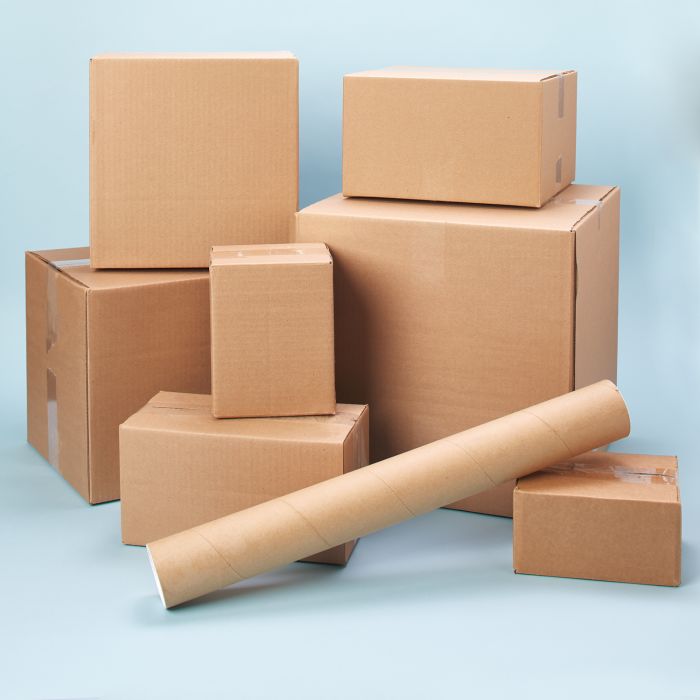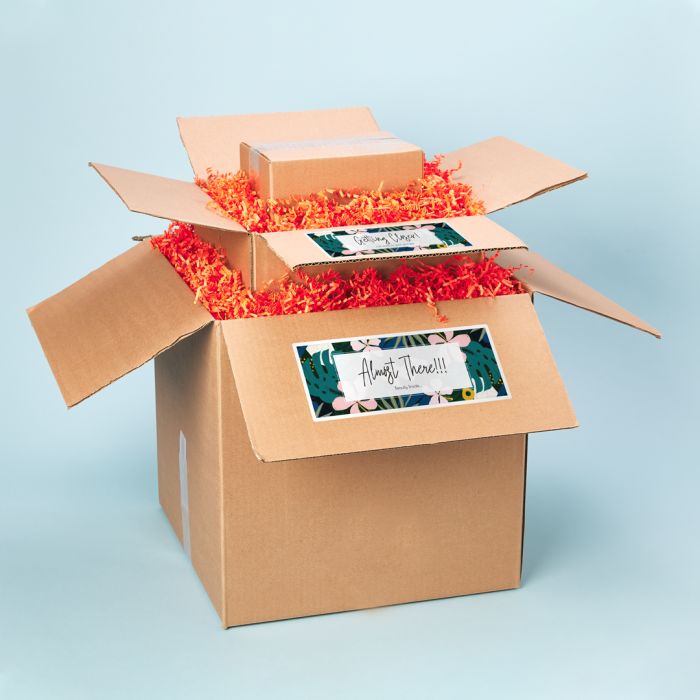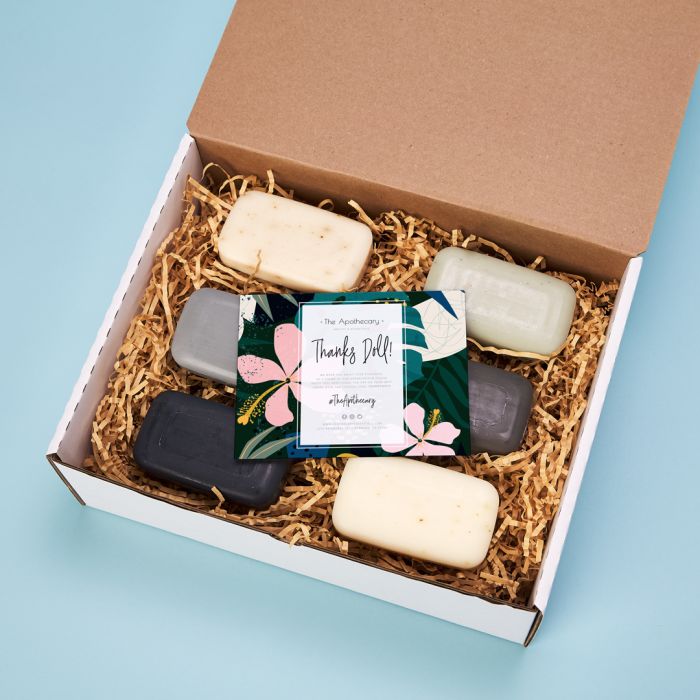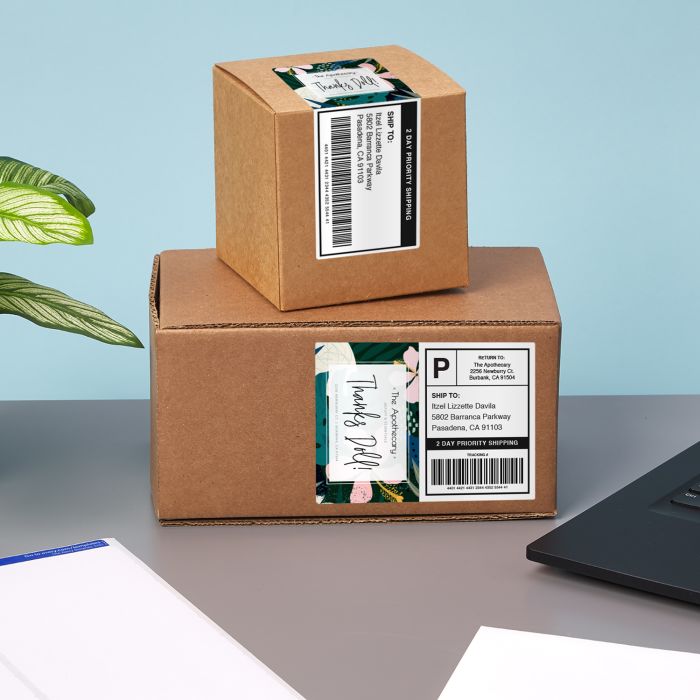
How to Send a Package for Less
Packing and shipping tips to save you money
Other articles you might like:
When you’re shipping for a small business, it can be one of the more expensive parts of your e-commerce company. This is especially true with the shipping demand always increasing. Getting your products to customers quickly, efficiently, and safely is probably the most important part of your company. If your products arrive late, broken, damaged, or leaking, it could very well be the last time you see that customer. To help you out, we’ve put together tips on how to send a package safely and for less money.
Create an efficient shipping station
Whether you use USPS shipping, UPS shipping, FedEx shipping, or another shipping service, if you ship packages on a regular basis, then having an area dedicated to prepping your shipments for pickup or delivery is extremely important. It will save you money by cutting down on errors with orders, preventing damage to the products being packaged, and recouping time lost looking for misplaced items like packing tape, scissors, and shipping labels.
If you have a larger workspace, get some open racks or shelves to hold your shipping supplies. It’s ideal to have a convenient place to store things like mailing envelopes, shipping boxes, padded mailers, and bubble wrap, as well as items like business cards, coupons, or giveaways you might place in every shipment. Also, have a section where you can keep important order documentation at hand, along with pens, paperclips, and other necessary items.
If you have some free wall space, a small pegboard is great for organizing tools and items like scissors and packing tape. Try using a small shower curtain rod or paper towel holder for keeping bubble wrap, butcher paper or other rolled packing materials neat and organized. If you’re shipping out of a small office or home, use sturdy boxes or plastic bins that you can stack and store when not in use.
Stop by your local UPS or FedEx store to get some ideas of how the professionals set up their shipping stations. Snap a couple of images (with permission of course) to use as a reference when you get ready to build your own station.
Start with the right shipping box

To save the most money and keep your products safe, try to match the size of your box as close as possible to the size and weight of your product or products.
Oversized boxes can incur extra charges from your shipping provider, so it’s best to keep your box as small as possible without overcrowding the items. Plus, your customers will appreciate not receiving a box 10 times bigger than the item in it. For heavier products, make sure to use a double-walled box.
Recycle & reuse
When new inventory or even personal shipments come in, try to reuse any boxes in good condition to send shipments to your customers. However, make sure the boxes are sturdy and don’t have any blemishes, tears, or holes. Try using opaque-backed shipping labels, like Avery Trueblock® labels to cover up any pen marks or scratches. TrueBlock shipping labels block out everything underneath the label and are available by the sheet online or by the pack in-store or online.
When your supply of reusable boxes runs out, many shipping providers offer free boxes if you use their service. So, depending on your product’s size and weight, you might be able to get your shipping boxes for free. If you ship products that are small and unbreakable, free envelopes are provided by some as well.
Shipping heavy items
If you’re shipping heavy products, it’s a good idea to send them in more than one box if you can. Heavy boxes can be a burden for your customer. You want to make sure whoever is receiving the shipment can lift and carry it as expected.
For instance, if someone orders a case of wine, they obviously know all 12 bottles are coming in one box. But you definitely wouldn’t put two cases of wine in one box. And the cost can actually be less for two smaller, lighter boxes, than one heavy box. Check with your shipping provider to see what the cost difference would be.
What the shipping companies offer
USPS
The U.S. Postal Service offers free shipping boxes and mailing envelopes when you send packages using their flat-rate priority service. So, no matter how much your package weighs or where you are sending it, it’s a set price. And delivery is usually in one to three days depending on the destination.
Once your packages are ready to go, you can even schedule a pickup from your business or home. Check the pricing and see what the difference in cost would be if you’re buying boxes and shipping them, as opposed to using flat-rate boxes.
UPS
UPS also has a variety of shipping boxes, tubes, and envelopes available at no cost. Some are charged based on a flat rate and the zone, while others are based on weight and zone.
FedEx
FedEx offers packing and shipping supplies to purchase on its site, but you must call the company to order complimentary express or ground shipping supplies.
Nest boxes for added security

To secure fragile products or to ship several individually wrapped items, cushion the smaller boxes inside of larger boxes for extra safeguarding. The extra boxes keep items secure and prevent financial losses from product breakage or damage.
- Wrap your products with at least a 2″ thickness of cushioning so they fit tightly inside the inner box. For extremely fragile items, we recommend wrapping a 3″ thickness.
- Use loose-fill peanuts, air pillows, or foam to prevent your products from moving, then securely close the box with good-quality packing tape.
- Your outer box should be at least 6″ longer, wider, and deeper than the inner box.
- Use your filler again to securely pack your smaller box inside the larger shipping box. You should encase your inner box with at least 3 inches of cushioning material to fill in empty space between the top, bottom, and sides of the boxes.
- When sending liquid products, place the containers in plastic bags or wrap them securely in bubble wrap to keep accidental messes away. And if you’re shipping paper or fabrics, wrap them with plastic first to protect against spills.
Pack it perfectly
Shipping regularly can mean high costs for foam wrap, packing peanuts, bubble wrap, and air pillows. But like your shipping boxes, reuse and recycle when you can. Many items can be used numerous times before showing wear and tear.
For small upstart businesses, ask your family, neighbors, and friends to save their spare packing materials and old newspapers. However, don’t forget, newspapers can leave ink on some products. You can also check with local businesses or distributors in your area and see what they do with discarded packing materials. Many companies will sell scrap foam and other materials by the truckload for pennies to get it off their property.
One area you don’t want to pinch pennies on, however, is your packing tape. Use sturdy tape that is at least 2″ wide and made specifically for shipping. Basic adhesive tape and masking tape will not hold up during shipping and can lead to boxes opening accidentally in transit.
Types of packing materials
- Foam wraps and bubble wraps protect breakable products and items. They conform to the shape of your products to keep them secure. Most are reusable many times unless you need to pop your bubble wrap.
- Packing peanuts or shredded and crumpled papers are ideal for filling empty spaces in shipping boxes.
- Butcher paper or kraft paper is a great inexpensive option for both wrapping and using as filler. It doesn’t provide the security of foam or wraps but can work well for small, unbreakable items.
Make the unboxing special

The unboxing experience is a big deal with consumers today. Unboxing videos of people opening shipments are some of the highest viewed videos on YouTube. So give your customers a little special bonus when they open their box. Don’t just greet them with bland boring wrapping materials. For a minimal cost, you can include a personalized card, sticker, small gift, or promo offer.
As shown in our nesting image above, adding fun personalized labels and stickers to the inside of box flaps is another way to greet customers with quirky, but on-brand messaging. And if you add a coupon or promotional offer, it’s likely to get you another order down the line.
You can order custom postcards for as little as 19 cents each to say thank you to your customers for their purchases. You can also buy printable postcards that allow you to print packaging inserts on-demand.
Shipping labels with flair

You can save money by buying your shipping labels online instead of going to the post office or office supply store. Simply order your printable shipping labels online, and personalize and print them through Avery or your shipping provider. Then schedule a pickup. It saves you both time and money.
If you want more professional shipping labels or don’t want to use up your printer ink, you can also order custom shipping labels with your logo and company address and information already printed.
To find the perfect retail packaged labels for your shipping boxes Avery recommends the following:
Large boxes
True Block® Shipping Labels 5.5″ x 8.5″
Small boxes
True Block® Shipping Labels 3-1/3″ x 4″



